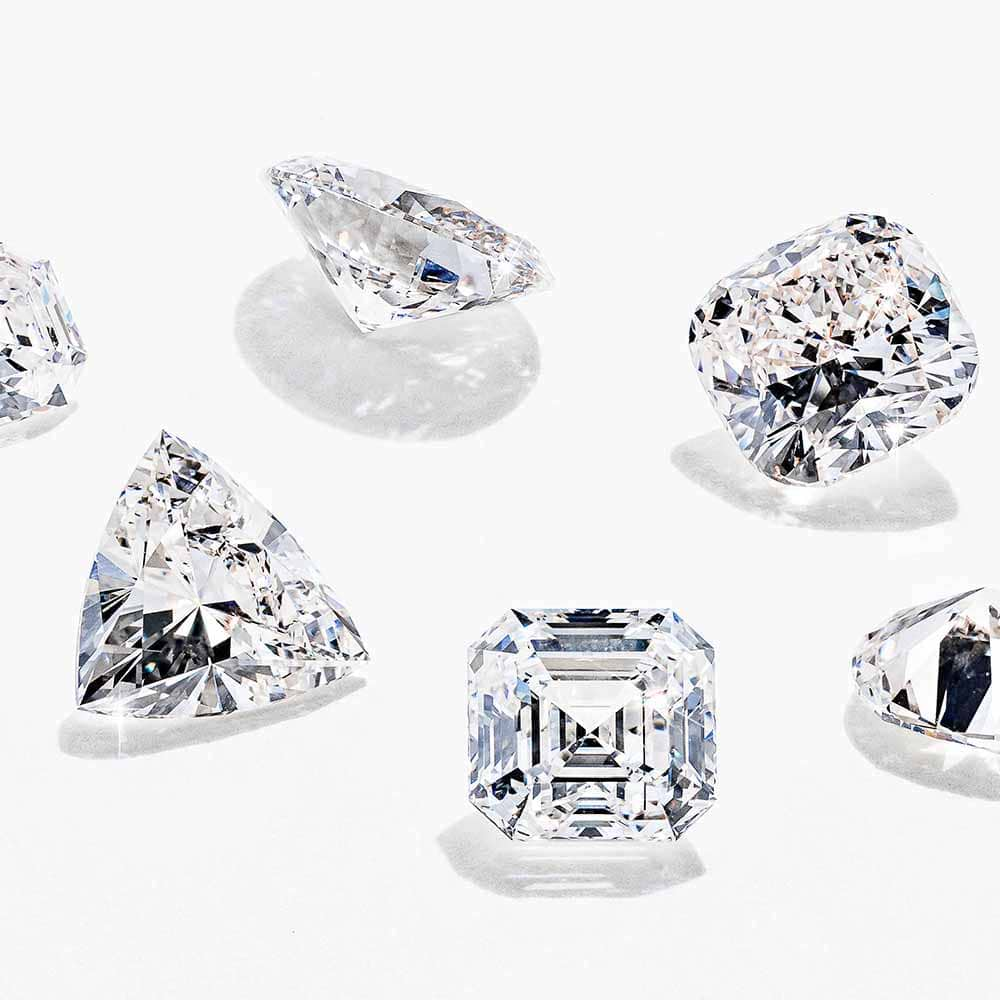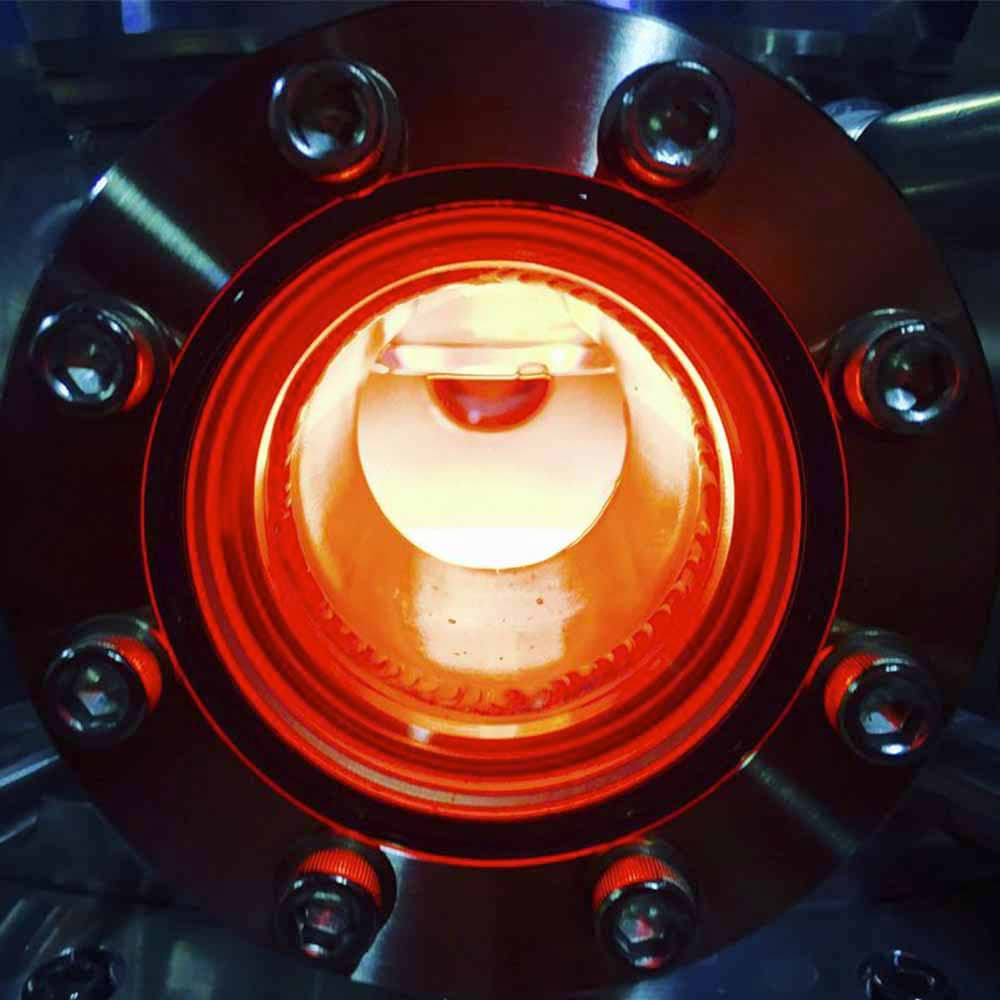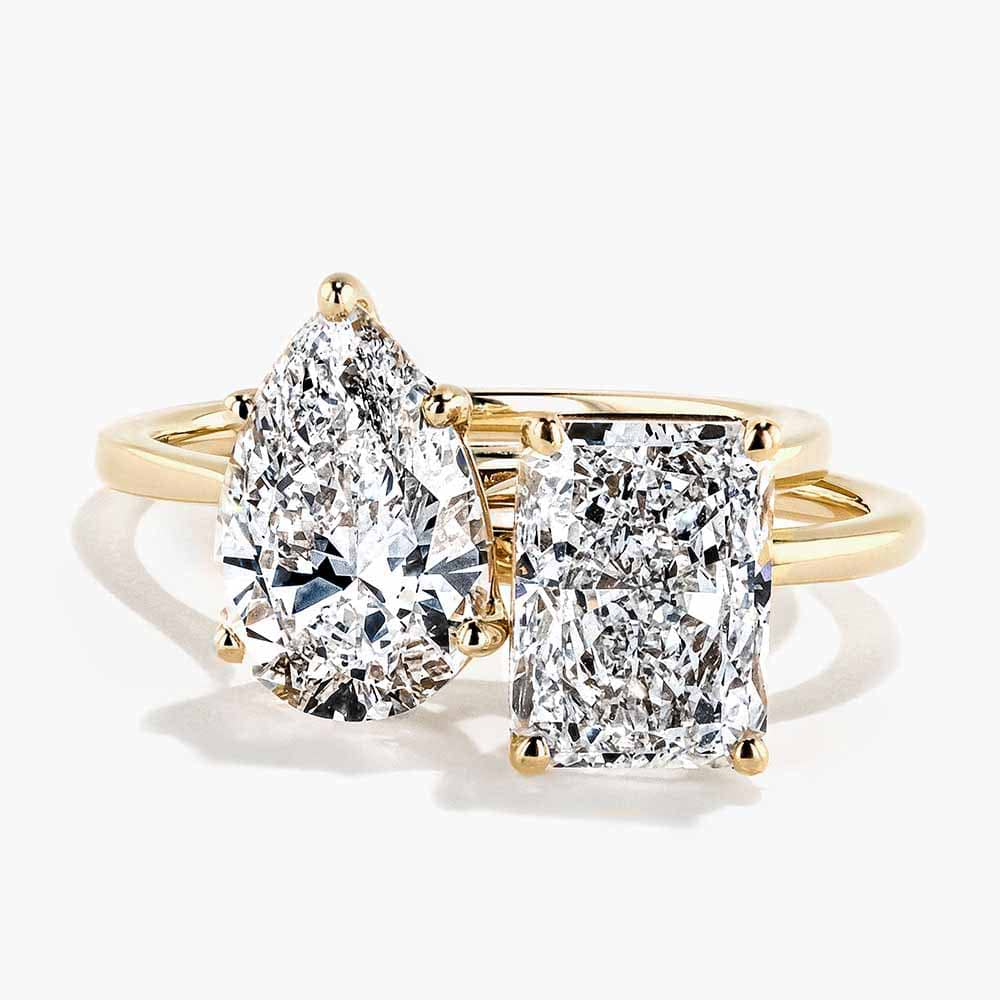The diamond industry has been transformed in recent years, and a revolution has occurred within modern luxury markets. While diamonds have long been considered the epitome of glitz and glamour, consumers wanting a more sustainable diamond have been responsible for reshaping how we perceive and acquire one of nature's most coveted treasures. Enter the world of CVD diamonds, where science, sustainability, and sheer elegance have converged to create a new paradigm in luxury jewelry.
There are two main scientific methods for growing diamonds in a lab. First, we have High-Pressure High-Temperature (HPHT), which has been around since the 1950s, and then we have a newer technology called Chemical Vapor Deposition (CVD). In this blog, we will explain the evolution of CVD diamonds, how they are created, their ethical origins, and their remarkable impact on the diamond market.
What is a CVD Diamond?
The acronym CVD stands for Chemical Vapor Deposition — and it is an advanced technological method used for growing diamonds in a lab. CVD diamonds are lab-grown diamonds that possess the identical chemical, physical, and optical properties as an earth-mined diamond but come without the ethical, environmental, and human rights concerns that ultimately run rampant in the natural diamond trade — and consumers are offered a brilliant alternative that aligns with modern values and ethical considerations.
CVD Technology — Space Diamonds?
An interesting point to make as it relates to CVD diamonds is that the technology behind the manufacturing process is rooted in the theoretical framework of how we believe diamonds are formed in space.
Yes — outer space!
Diamonds can form in space (also known as extraterrestrial or space diamonds) under extreme conditions, such as in the cores of certain types of stars. In these environments, high temperatures and pressures can crystallize carbon atoms into diamond structures. This process is sometimes referred to as "stellar nucleosynthesis."
How Does the CVD Process Work?
The entirety of the CVD process takes place in a controlled laboratory setting. Here is how the process works when creating lab-grown diamonds:
- Seed Crystal: A tiny slice of natural or lab-created diamond, also known as a seed crystal, is placed in a sealed chamber.
- Gaseous Mixture: A mixture of carbon-containing gases (usually methane and hydrogen) is introduced into the chamber and mixed with electrical energy. It ignites a plasma ball within the chamber, breaking down the gases to their atomic components in this heating stage (typically between 600-900°C).
- Carbon Deposition: Next, the carbon atoms from the gases settle onto the surface of the seed crystal, layer by layer. This process mimics the way natural diamond formation occurs. Carbon atoms ultimately bond together and create the crystal lattice structure that gives diamonds exceptional hardness and brilliance.
- Crystal Growth: Carbon atoms continue to accumulate on the seed crystal. It causes it to grow and results in a larger diamond. This process takes up to 12 weeks from start to finish.
- Cooling: The chamber is slowly cooled down so that the newly formed diamond has the chance to solidify.
- Harvesting: Once the diamond has reached the desired size, it is carefully extracted from the chamber, cut, and polished to create a finished gemstone that can be set in a piece of jewelry, such as an engagement ring.
How Do CVD Diamonds Compare to Natural Diamonds?
The short answer to this question is that CVD diamonds — lab-grown diamonds — share all the same physical and chemical properties as a natural diamond. They are both comprised of pure carbon atoms arranged in a crystal lattice structure.
However, there are several key differences between lab-grown and natural diamonds, impacting their value, appearance, and environmental bearing. Consider the following:
- Inclusions: Inclusions occur in both natural diamonds and CVD diamonds. Natural diamonds often contain inclusions, which are internal flaws or foreign material. Inclusions are rare in high-quality natural diamonds but common in lower-grade, cheaper stones. CVD diamonds can sometimes contain tiny metallic inclusions but are tiny and equivalent to higher-grade natural diamonds.
- Color: Natural diamonds can be discovered in varied colors, including colorless, yellow, pink, blue, green, and red. CVD diamonds can also be produced in fancy colors; however, scientists manipulate the process to create specific colors, enabling the color to be more brilliant and vivid than that found in nature.
- Cost: CVD diamonds are more affordable than natural diamonds. Since the lab environment is carefully controlled, production and energy use are more efficient, reducing costs to the end consumer. This cost difference is also quite noticeable when comparing larger lab-grown stones and natural diamonds.
- Ethical and Environmental Impact: CVD diamonds are widely considered more ethical and eco-friendly than natural diamonds. Diamond mining, as an industry, has historically been riddled with conflict and human rights abuses (especially in some geographic regions) and is a business that causes significant environmental impacts, including habitat destruction and water pollution. CVD diamonds are conflict-free and do not contribute to environmental degradation. As such, they are seen as a more responsible choice.
- Certification: Both CVD diamonds and their natural counterparts can be certified by gemological laboratories, ensuring that the diamond's quality and characteristics are accurately represented — whether it is a natural or a lab-grown diamond.
Additional CVD Diamond FAQs
The team at MiaDonna believes that an educated diamond shopper is a satisfied and happy diamond shopper — and will walk away from their diamond buying experience with a piece of jewelry that will be treasured for years to come.
We have compiled some other essential FAQs you need to know as you shop for a CVD diamond.
Are CVD diamonds real diamonds?
CVD diamonds are lab-created but identical to natural diamonds, and it is only possible to tell a CVD diamond apart from a natural diamond with specialist equipment.
Are CVD diamonds durable?
Absolutely. CVD diamonds are created to stand the test of time and are exceptionally hard and durable. They are suitable for everyday wear in jewelry items such as rings, earrings, and necklaces.
Can CVD diamonds be placed in custom jewelry?
Yes. Since CVD diamonds can be grown in varied shapes and sizes, a consumer can use them in one-of-a-kind custom jewelry pieces. All you need is your imagination!
Is it possible to identify a lab-grown diamond with the naked eye?
From the perspective of the average consumer, no. Gemological laboratories use advanced techniques to identify CVD diamonds. While trained gemologists can often distinguish between natural and CVD diamonds based on specific characteristics, advanced testing equipment is necessary for accurate identification.
Does it matter where I buy a CVD diamond?
As with any luxury purchase, yes, it is crucial for a consumer to be aware of what they are purchasing and only work with a jeweler that has a good reputation. A reputable jeweler will provide certification for a CVD diamond, allowing a shopper to make informed decisions about their purchase.
Do CVD diamonds change color?
In response to heat or prolonged UV exposure (>450°C), some CVD diamonds can experience a temporary and reversible slight change in color. It is a process called Photochromism. It is not a concern since you could never expose your diamond to these temperatures.
MiaDonna: CVD Diamonds for a New Generation™
Our business was born when our founder, Anna-Mieke, learned the origin of her own earth-mined diamond and wanted to find a diamond option that was conflict-free, kind to the environment, and based on integrity.
MiaDonna is proud to offer the most innovative, beautiful, and socially responsible lab-grown diamonds on the market today. No matter where you are in your CVD diamond-buying journey, we invite you to reach out with your questions. We welcome the opportunity to work with you and ensure the lab-grown diamond you decide upon is precise to your liking so that you are completely satisfied with your purchase.
Contact our team today to set up a personalized consultation and learn about all your lab-grown diamond options.















